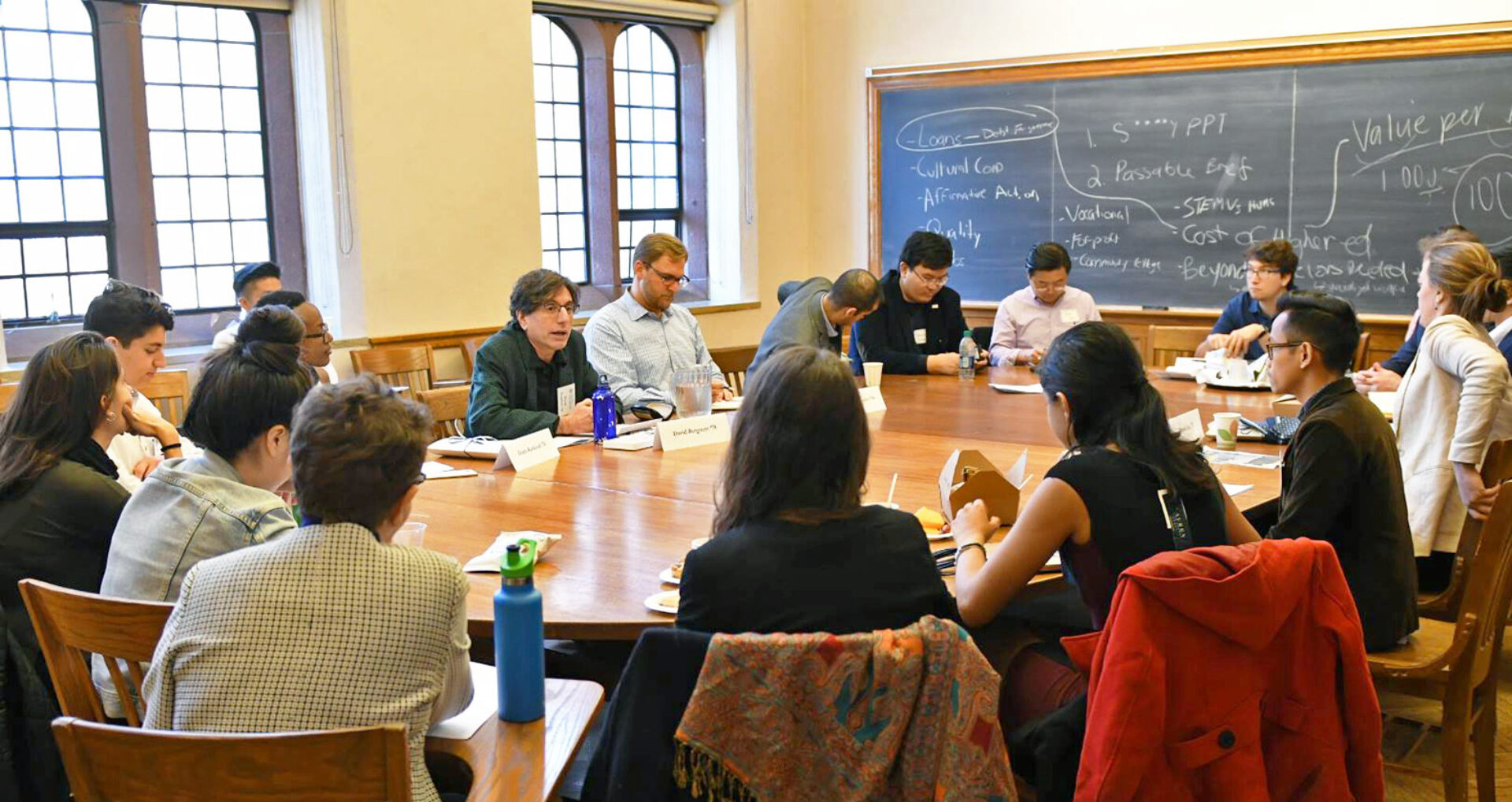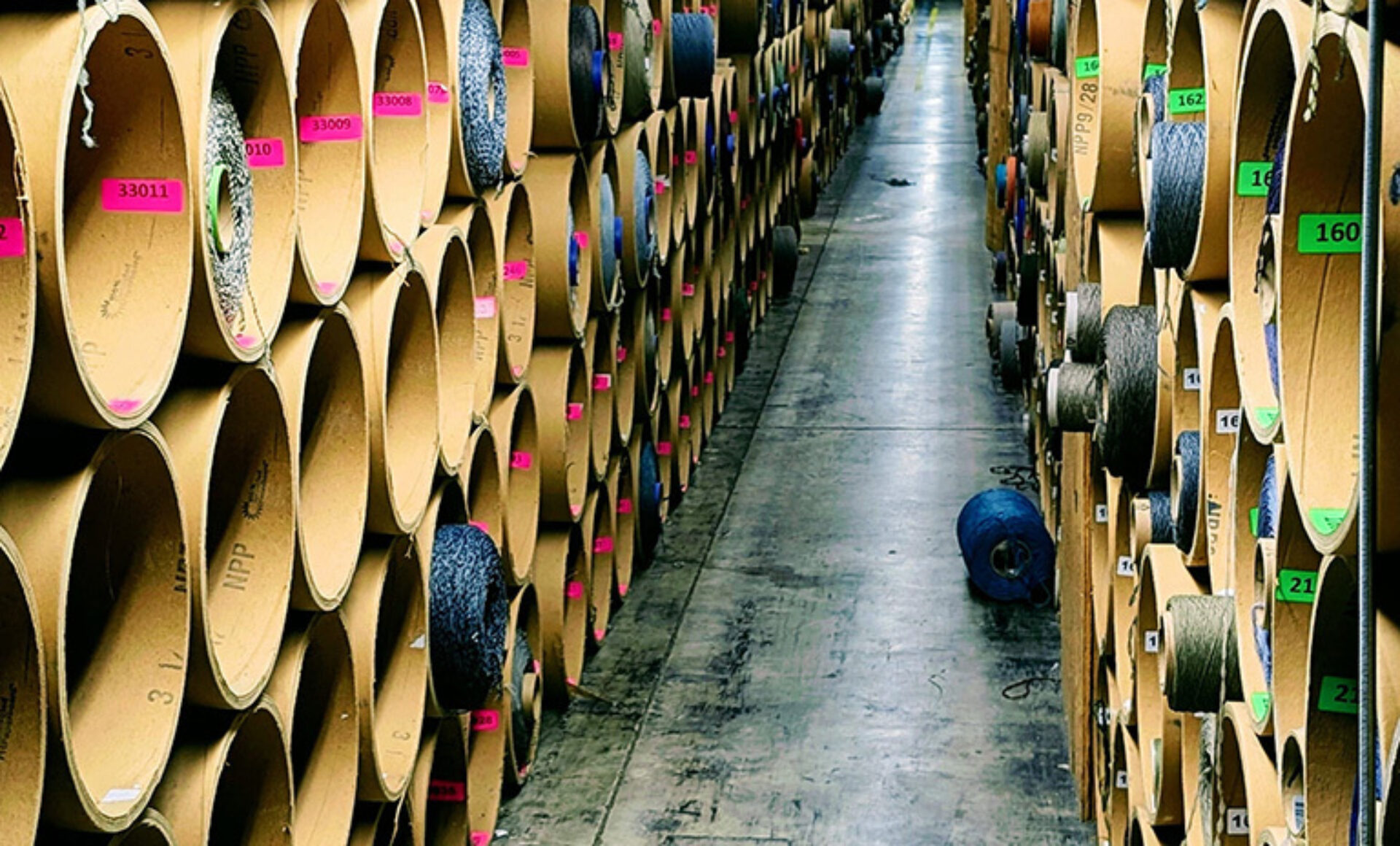(Above: Bergman leading a discussion about careers in sustainability at Yale. Image courtesy of David Bergman)
An optimist by nature, David Bergman, Assoc. AIA, has shaped his career into one where he is not only exploring sustainable and eco materials and methods in his own design–but also as an educator. As the Program Director for the New York School of Interior Design's (NYSID) Master of Professional Studies in Sustainable Interior Environments, and an Adjunct Assistant Professor at Parsons School of Design, where he teaches aspects of ecodesign, Bergman is uniquely positioned to shape the future of sustainable design through education.
As an educator, author, and of course a designer, Bergman recognizes the unique impact that interior designers have on the communities that inhabit these spaces, and the environment surrounding them. Through a life of investigating the built environment and the natural environment, and many years of practice as an architect he still asks: How can we use design to make not only a meaningful impact, but one that sustains our planet as well?
Can you tell us about the program at NYSID, and what has changed in sustainable interior design in the past decade?
DB: I’m the Program Director for the Master of Professional Studies in Sustainable Interior Environments at NYSID. The program began about 13 years ago, and is, as far as I’m aware, the only degree program specifically focused on sustainable interior design.
The field—and how we approach it academically—has indeed changed quite a bit in recent years due to several overlapping developments. First, the definition of what we include in sustainability has expanded. Until fairly recently, it was focused on climate change along with other environmental issues. It was more about how we treat the planet than how we treat the occupants of our designs.

Three factors came together to change this—the first is that we spend the vast majority, as much as 90%, of our lives indoors. Second, as buildings became better insulated, there was less exchange of indoor and outdoor air through infiltration. And third, more and more of the materials we use indoors have off gassing and other issues. So we end up with an indoor cocktail of chemicals surrounding us.
Another big change is in how we evaluate materials. Early on, the emphasis was almost entirely on operational energy. But as buildings have become more energy efficient, the importance of embodied energy versus operating energy has changed.
At the same time, embodied energy studies and life cycle assessments have focused on the materials used to make the cores and shells of buildings since they appeared to have the most impact. What wasn’t factored in is that interiors—especially commercial ones—get demolished and replaced much more often than most people would have thought. The materials in the structure or the façade of a building may initially have a higher environmental impact, but when we acknowledge the ‘churn’ of interior materials over the course of a building’s life, the focus needs to shift.


There are two concepts that come out of this. One is simply that we have to take the carbon footprints of interior materials much more seriously. The other is that we have to find ways to diminish that material churn through designs that incorporate disassembly and reuse.
How do we know how significant interior materials are? Well, that ties into another aspect of sustainable design that’s changed, and it’s an indication of the maturation of the field of sustainable design. Sure, we knew (mostly) what things were bad for the planet or for ourselves, but we didn’t have good ways to quantify it. We were, in a sense, flying by the seat of our pants. Now we have a plethora of methods to calculate and compare everything from what type of structure would be most appropriate to which carpet and which chairs to choose. Life Cycle Assessment—the method to do this—has been around for a while, but now we are getting accessible software tools and more data and can make smarter decisions.
How do you position students to be ready to enact change when they enter the workforce?
DB: One of the last courses the students take is called “Frontiers of Sustainable Interior Environments.” The course is a combination of guests in the field talking about their work in new areas and the students writing a paper on a topic that they feel needs to become a new or more significant part of sustainable interior design. They also have a group final assignment in which they write a manifesto. I show them manifestos from other design fields and elsewhere, manifestos that may be highly critical, and ask them to write a manifesto of their own. I tell them it’s OK to kick us in the pants.
What is the biggest change you see in students from when they begin the program to when they complete the program?
DB: I think many students come into the program with a vague idea of what sustainability is and with the assumption that whatever is ‘green’ is good. When they emerge, they‘ve refined their view, realizing that sustainability is a critical part of design, meaning it’s no longer elective and is no longer an add-on, and that they need to be always pushing the boundaries.
How can commercial interior designers make meaningful impacts in the way they work, source, or design?
DB: We need to view our relationship with materials differently. The conventional approach has been “take-make-waste.” Implicit in that view is that the Earth has an unlimited amount of materials. But we know, of course, that’s not true. Acknowledging this requires a fundamentally different attitude about materials. Rather than seeing our designs as an end use of the materials we specify, we need to think of those designs as temporary assemblages of borrowed matter.
Designers, almost by definition, perceive our work with a great deal of hubris. Our designs are sort of our personal monuments. But we have to view our material constructs as temporary, that they will change in the course of a building’s life and that, with few exceptions, the buildings themselves are temporary. We don’t take into account the end of life of buildings. ‘Design for disassembly’ has not been a part of our design process.

This involves another topic that was not included in sustainable interior design until very recently: the circular economy. It’s the opposite of take-make-waste. It’s a continuous loop in which we use materials that already exist or that can be sustainably harvested.
Why are interior designers/architects/designers so remarkably positioned to change the world?
DB: Who else has so much impact on our daily and minute-to-minute lives? Whenever you’re in a human-made environment, that is to say anything not ‘out in nature,’ you’re in a place that has been willfully created. The people that create those spaces can have both a passive and active influence. A passive influence would be what I used to call “Transparent Green,” meaning it’s environmentally conscious but without the occupant needing to do anything or be aware of it. But we can also design with what I call “Visible Green” elements that either directly involve or educate people about their built environments.


What’s next on the horizon that you are most excited about (materials, concepts, strategies)? What are your students most excited about?
DB: I love all the materials research and development, especially biomaterials, that seem to be emerging every day. Many of these are materials that will be carbon neutral or negative. Some of them are good substitutes for more problematic materials and are a no-brainer. But some are truly new materials with unique properties and capabilities that can lead us in new design directions. I love getting my hands on a new material and pondering how I can use it. Each new material brings with it a Louis Kahn moment, mulling over the material and asking it what it wants to be.
3D printing is also incredibly exciting. We’re seeing the rapid evolution of 3D printing of both materials and buildings. Among the design and environmental implications is that we will be building additively rather than deductively, which means less waste.
How do you spread enthusiasm for sustainability in interior design?
DB: I often begin and end an academic year by talking about how much power we designers have, ranging from the “power of the purse” in selecting eco materials to how much influence and responsibility we have on people’s everyday lives. And I talk about approaching eco-design in terms of desires not constraints. That’s the basis of my occasional blog EcoOptimism, that these are things we do not just because we have to, but because we want to.
Visit the table of contents for more Perspective: Sustainable Futures







